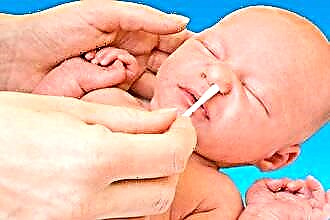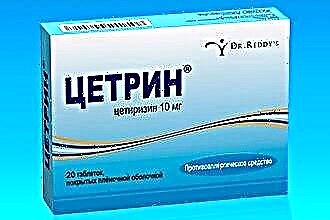Atherosclerosis of the vessels of the lower extremities is a chronic disease that affects the arteries and arterioles, and is also accompanied by signs of impaired blood circulation in the legs. The development of pathology is associated with a complex disorder of fat metabolism in the body and environmental factors. Disruption of the smooth structure of the inner lining of the vessel, deposits of lipids and calcium salts narrow the lumen and reduce the delivery of oxygen and nutrients to the muscles. Damage to the arteries of the lower extremities by atherosclerosis is one of the most common causes of leg amputation.
Clinic and main symptoms of the disease
The appearance of clinical signs is associated with a narrowing of the vessel lumen by more than 75%. Most often, the pathological process is localized in the lower abdominal aorta. (below the outlet of the renal arteries): 33% - aorto-iliac segment, 66% - femoral-popliteal.
The appearance of an atherosclerotic plaque with the formation of fibrosis (dense connective tissue) can be considered as an adaptive mechanism in response to trauma and aseptic inflammation of the inner membrane due to a strong blood flow in the main arteries.
Typical signs of lower limb involvement
Symptoms of the disease are caused by impaired blood delivery through the affected vessels to the muscles and nerve fibers.
The most characteristic symptoms of atherosclerosis of the vessels of the lower extremities:
- decreased exercise tolerance (fatigue when walking);
- intermittent claudication is a specific symptom characterized by the appearance of intense pain (burning) in the leg during physical exertion, the need to stop and rest;
- neuropathies occur due to impaired nutrition of nerve fibers and are felt by goosebumps, numbness, convulsions;
- discoloration of the skin (blanching) of the legs, local decrease in temperature;
- thinning of the layer of subcutaneous adipose tissue, muscle atrophy (the volume of the limbs differs among themselves in case of unilateral damage);
- atrophy of hair follicles (hair on the legs becomes thin, brittle, falls out over time);
- hyperkeratosis of the skin of the feet, nails.
The severity of symptoms is determined by the level, length and degree of narrowing (stenosis). In addition, the presence of concomitant aggravating factors (diabetes mellitus, smoking, old age) worsens the prognosis for the patient's life and health.
Manifestations of the disease in the elderly: what is special?
The diagnosis is more often exposed to men, since the fairer sex before menopause has a protective effect of estrogen, which prevents the development of atherosclerosis. In addition, pathology is more often diagnosed in elderly people due to the depletion of adaptive and compensatory mechanisms. The features of atherosclerosis of the lower extremities in such patients are:
- slow progression of symptoms due to damage to nerve fibers;
- high intensity of pain syndrome (the reason is that collateral arteries, which provide the minimum necessary blood flow in the tissues, no longer grow);
- systemic disorders: weight loss, exhaustion, impaired mental status;
- progressive muscle atrophy;
- frequent ulcers that do not respond to conservative treatment;
- high risk of complications (in 30% of cases): gangrene, septic conditions.
Additional chronic pathologies of the respiratory system, heart, kidneys complicate the diagnosis and selection of effective treatment.
Amputation of the lower limb is prescribed in 45% of cases of the disease in elderly patients, which leads to disability and a deterioration in their quality of life.
Types and stages of atherosclerosis of the lower extremities
Occlusion of the main arteries of the lower extremity with an atherosclerotic plaque causes a characteristic clinic, depending on the stage of the process.
In practice, doctors use the classification of the process based on the functional abilities of the patient. (according to Fontaine-Pokrovsky)presented in the table.
| Degree of violation | Pain syndrome | Additional signs |
|---|---|---|
| I | With significant physical exertion (walking 1 km or more) | Weakness, fatigue |
| II | A. Pain develops at a distance of 200-1000 m | The development of trophic manifestations: a decrease in muscle and fat mass, thickening of the nails and skin of the feet |
| B. Intermittent claudication when walking 50-200 m | ||
| III | Resting pain | To reduce pain, patients lower the affected limb, which acquires a purple-cyanotic color. Progressive muscle atrophy |
| IV | Stage of destructive changes | The appearance of trophic ulcers, gangrene |
Stage III and IV disorders are considered "critical ischemia", which requires urgent medical attention, most often surgical.
In addition, it is often used North American classification, which takes into account the results of measurements of ankle pressure.
| Degree | Intermittent claudication | Ankle pressure |
|---|---|---|
| 0 | Asymptomatic course | Indicators within normal limits |
| 1 | Insignificant | More than 50 mm. rt. Art. after load |
| 2 | Moderate | Intermediate indicators between 1st and 3rd stage |
| 3 | Expressed | Less than 50 mm. at rest |
| 4 | Resting pain | Less than 40 mm. at rest |
| 5 | Minimal ulcers, local gangrene, ischemia of the foot | Up to 60 mm. at rest |
| 6 | Gangrene that rises above the metatarsophalangeal joints | As in the 5th degree |
At the 5th and 6th degree of ischemia, angiography of the vessels determines the expansion of collaterals and complete occlusion of the main arteries of the foot.
What do the legs look like with atherosclerotic lesions at different stages?
Changes in the appearance of the leg are characterized by the level of damage, the degree and duration of the process.
Typical signs of disorders at different stages of pathology:
- The phase of functional compensation, which develops as a result of a generalized reaction of the body, aimed at improving blood flow. Pallor and coldness of the skin, periodically occurring tingling sensations in the fingers, are determined.
- The phase of subcompensation, which is characterized by dry skin, decreased elasticity. The affected limb is smaller in volume than the healthy one. Callus develops on the feet (hyperkeratosis), the nails become coarse, break, and there are areas of baldness on the legs. Photo of atherosclerosis of the lower extremities of the 2nd degree:
- The phase of decompensation, in which there is a pronounced atrophy of muscles and subcutaneous tissue. The skin becomes thinner, minimal trauma leads to the formation of ulcers and cracks. Photo with a trophic ulcer on the inner surface of the left ankle joint.
- The phase of dystrophic changes, in which dry gangrene of the foot develops. The terminal stage of atherosclerosis, which requires immediate surgical intervention in order to prevent infectious and septic consequences.
Treatment and diagnosis of the disease: how to solve the problem of atherosclerosis
The main reason for the development of pathology is not fully understood, therefore, doctors identify a number of predisposing and provoking factors. Therapy of atherosclerosis implies a complex effect on:
- risk factors (obesity, smoking, diabetes compensation);
- pathogenesis of the disease (expansion of the lumen, improvement of blood properties);
- anesthesia;
- secondary prevention of complications.
Who treats pathology and who to contact
To diagnose atherosclerosis if signs of impaired blood supply in the lower extremities are detected, consultation of the following specialists is necessary:
- cardiologist;
- cardiovascular surgeon for differential diagnosis with pathologies of the venous bed, endarteritis, thrombangoitis;
- X-ray endovascular surgeon and interventional radiologist - specialists who carry out contrast methods for diagnosing pathology;
- endocrinologist - in the presence of concomitant diabetes mellitus.
Treatment of atherosclerosis of the lower extremities is carried out after determining the main causes of disorders in each patient, indications and contraindications for the appointment of drug therapy or surgical interventions.
What kind of research do you need to go through beforehand?
A general clinical examination by a specialist means:
- Assessment of the pulse on the arteries of the lower extremity. The level of occlusion is determined by the superior site: if there is no pulsation in the femoral artery, the lesion of the aortoiliac segment, popliteal - femoral.
- Auscultation - a systolic murmur is determined over the affected area.
- Functional tests of Oppel, Panchenka (lost their diagnostic value).
Paraclinical research methods and changes necessary for setting in atherosclerotic lesions are presented in the table:
| Method | Characteristic signs |
|---|---|
| Measurement of the ankle-brachial index (the ratio of blood pressure on the upper and lower extremities, normally -1) | Decrease to 0.7 and below, depending on the degree |
| Doppler ultrasound examination (USDG) |
|
| X-ray contrast angiography |
|
| Blood chemistry |
|
Additional methods include determining the level of homocysteine: the higher the concentration of the latter, the higher the risk of disease.
Drugs for treatment: what drugs are prescribed for atherosclerosis of the lower extremities
Conservative therapy of atherosclerosis is carried out at the 1st or 2nd stage of the disease in the absence of indications for surgical intervention. The basic principles of treatment and the groups of drugs used are presented in the table.
| Action | Group of drugs | Means and doses |
|---|---|---|
| Lipid-lowering | Statins |
|
| Homocysteine-lowering |
| |
| Improving the rheological properties of blood | Disaggregants |
|
| Peripheral vasodilators |
| |
| Elimination of vasospasm | Myotropic antispasmodics |
|
| Prostaglandin analogs |
|
A prerequisite for effective treatment is compensation for other diseases (diabetes mellitus, pathology of the respiratory system, liver and kidneys).
How to relieve pain
The mechanism of occurrence of complaints is associated with impaired blood flow and the development of aseptic inflammation, therefore, symptomatic treatment of atherosclerosis involves anesthesia with non-steroidal drugs.
The most commonly used medicines are:
"Nimid" - gel for topical use;
- "Diclofenac" (in the form of a 1% ointment or gel for topical use);
- "Dolobene-gel" (active substance - heparin) - is used to prevent recurrent thrombus formation.
In a hospital setting, pain is relieved with local anesthetics or parenteral prostaglandin analogs.
Modern surgical methods of treatment
The effectiveness of conservative treatment has been proven only in the early stages of the process, therefore, surgical intervention is used to radically restore blood flow. The most frequently used operations are presented in the table.
| Method | The essence of the intervention |
|---|---|
| Balloon angioplasty, stenting | The gold standard of treatment, which consists of endovascular catheter insertion, dilation of the vessel lumen with an inflatable balloon, and placement of a metal frame |
| Bypass surgery | Creation of "bypass" connections of the segment below the lesion with the area of normal blood flow |
| Endarterectomy | Removal of a thrombus from the lumen of the artery and the area of the affected inner lining |
| Resection with prosthetics | Isolation of a segment with atherosclerosis, replacement with a graft (synthetic or from the patient's veins) |
| Sympathectomy | Removal of nerve ganglia (with open or laparoscopic surgery) to eliminate vasospasm |
With necrosis or gangrene, limb amputation is required, depending on the level of the lesion: finger, ankle, knee.
Recovery and rehabilitation of the patient
The prognosis for a patient's life is largely determined by preventive measures after radical intervention: dispensary registration (screening), regular medication, physical activity contribute to the early restoration of the functions of the lower limb.
Dosed walking: what is the duration and intensity?
All patients require a special rehabilitation program with exercise therapy. Dosed walking (on a treadmill - treadmill) is considered the most effective method.
Basic principles of appointment:
initial duration - 35 minutes, gradual increase up to 60 minutes;
- engage in 2-3 times a week;
- the intensity is determined individually at the level of the load, which causes lameness within 3-4 minutes;
- with a gradual improvement in the quality of walking - increase the intensity at the expense of the speed, not the duration of the workout.
It is recommended to start classes during your stay in the sanatorium under the supervision of a doctor. If you experience shortness of breath or chest pain, see a specialist.
Prevention of vascular lesions of the lower extremities
The peculiarity of blood flow in the vessels of the legs is increased blood flow through the main arteries and obstructed outflow due to the counteraction of gravity. The occurrence of atherosclerosis and other vascular pathologies is directly related to the influence of environmental factors.
Primary prevention involves:
- adequate physical activity (at a young age - playing sports, in the elderly - daily walking);
- correction of body weight (obesity contributes to an increase in the volume of circulating blood, an increase in blood pressure, load on the vessels of the legs);
- control of lipid levels in patients with a burdened family history;
- rational nutrition, enriched with B vitamins, proteins, polyunsaturated fatty acids (in vegetable oils), phospholipids (sea fish);
- compensation for diseases of other organs and systems;
- giving up bad habits: smoking, drinking alcohol.
Conclusions
Atherosclerotic lesion of the arteries of the lower extremities is a common pathology that mainly affects elderly men. Violation of blood flow is one of the reasons for amputation and disability of the population. Comprehensive diagnostics using modern methods and a differential approach to treatment prevent the development of complications.



